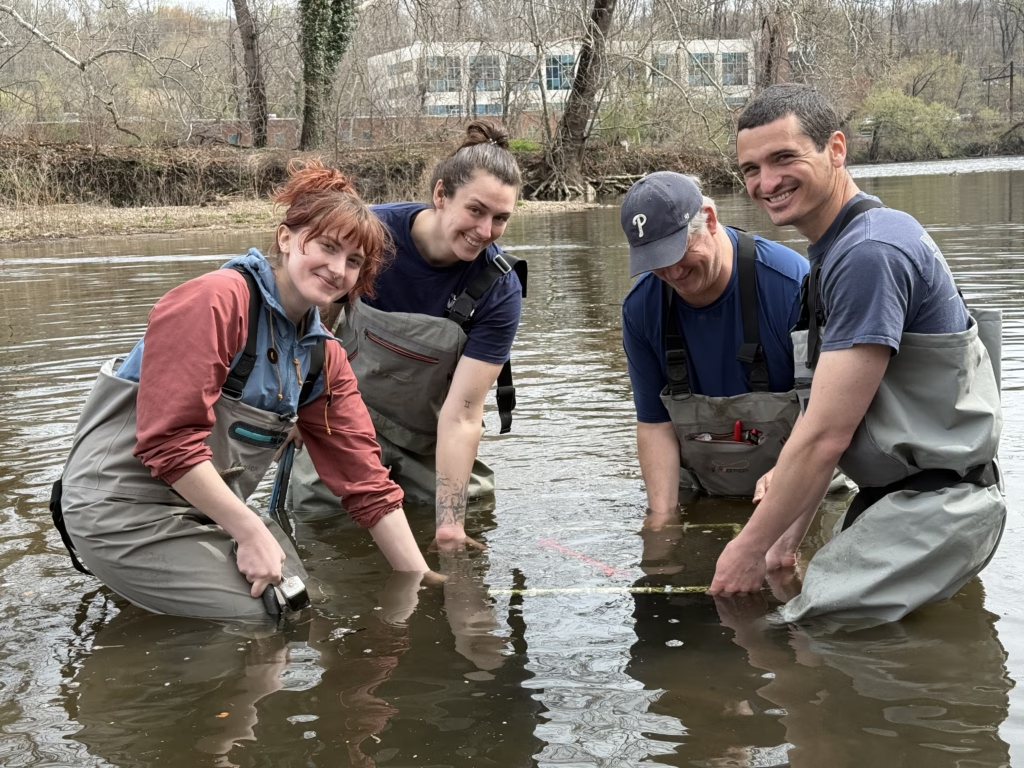Philadelphia uses ‘blue-collar bivalves’ to enhance urban water quality
August 21, 2025

AWWA Articles
Philadelphia uses ‘blue-collar bivalves’ to enhance urban water quality
A once-stagnant canal in northwest Philadelphia is now the site of a groundbreaking experiment in water purification — and it’s powered by mussels.
The Manayunk Canal, long disconnected from the Schuylkill River and plagued by poor water quality, has been revitalized through a reconnection project that introduced fresh, flowing water. “It instantly brought in new fish, new wildlife,” said Brian Rademaekers, public information officer at the Philadelphia Water Department. “Much higher quality water. But Lance is also taking advantage of this new change in water quality to expand his mussels research.”

That would be Lance Butler, a senior scientist who has been working on the canal since 1998. The canal is about two miles upstream from one of the department’s drinking water intake facilities.
“The concept of restoring the system with historic levels of freshwater mussels didn’t emerge until 2014,” Butler said. “By surveying both the Delaware and Schuylkill rivers, we realized how many mussels we actually have, what species are present, and which taxa are now locally extirpated.”
The idea was simple but powerful: reintroduce native mussel species to act as natural water filters. “They’re indiscriminate filter feeders,” Butler said, “siphoning all types of food particles, including zooplankton, phytoplankton, bacteria, and other particulate matter. However, they’re very particular in what they ingest and what they reject. Studies have shown that certain species are capable of removing more than 75% of pathogenic bacteria — like E. coli — out of the water within 24 hours.”
Biofiltration studies by the department’s scientists have shown that a single mussel is capable of filtering 6 to 10 gallons of water per day, with some freshwater mussel species filtering as much as 14 gallons per day. Multiply that by tens of thousands, and the impact becomes significant. “In some streams, in low-flow conditions, studies have shown that healthy mussel beds can process as much as 95% of the flow,” Butler said. “They are, in my opinion, mini water treatment plants. … We call them blue-collar bivalves.”
The project has become more than a scientific experiment; it’s grown into a way to educate and involve the community in water quality efforts. Mussels in the Classroom, for example, is a program that engages students in hands-on learning and stewardship. “We construct recirculating aquaculture systems for classrooms, and we provide juvenile mussels,” Butler said. “Teachers educate students about this organism and its relationship to drinking water and clean water and wastewater — and the ecology behind it.”
Mussel Maniacs, a program available to the public, allows adults and teens to help with building cages for controlled releases of matured mussels, among other tasks. The Fairmont Water Works Interpretive Center provides hands-on opportunities for residents to understand the lifecycle and importance of freshwater mussels.

While research and aquaculture techniques for marine mussels has been well vetted, in part due to their commercial value, “the science of freshwater mussel propagation and culturing is relatively new and under-represented in scientific literature,” Butler said. One of the major reasons for this is the complexity of propagation: Unlike mussels in marine systems, freshwater mussels need a host fish to reproduce. After fertilization, females store the larvae in an internal pouch (marsupium) through winter; once it finds its host fish, it breaks the holding pouch, releasing thousands of larvae into the water column in hopes that a select few attach to the gills and eventually grow into a juvenile mussel.
This is somewhat of a precarious process; in nature, Butler says, 1 in 10,000, or 0.01%, make it to adult age. “We’re trying to get that number to between 30%-50%,” he said. So they propagate them in a lab, which has taken time to perfect, before releasing them in the wild. “We are cutting our teeth — learning from subject matter experts and modifying their techniques to maximize efficiencies and survivorship of our native mussels.”
Now, Butler and his team are looking forward to studying mussels’ persistence in various habitat types and expanding their introduction in the field.
The Philadelphia Water Department manages drinking water, wastewater, and stormwater systems, and Butler sees freshwater mussels playing a part in each. “They’re not the panacea,” he said. “They are part of the toolbox to address water quality and improve habitat in our urban waterways.”
Advertisement